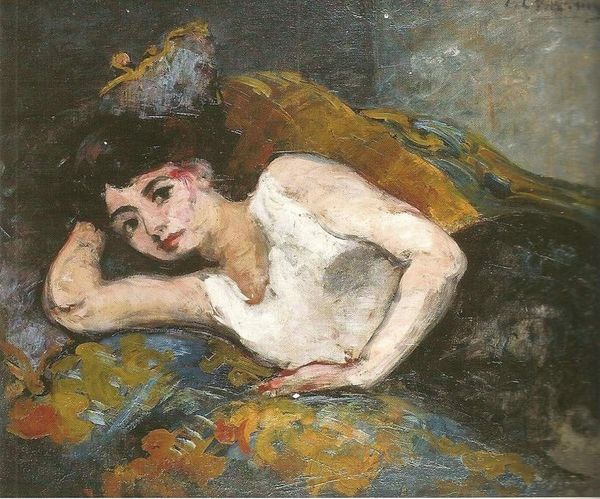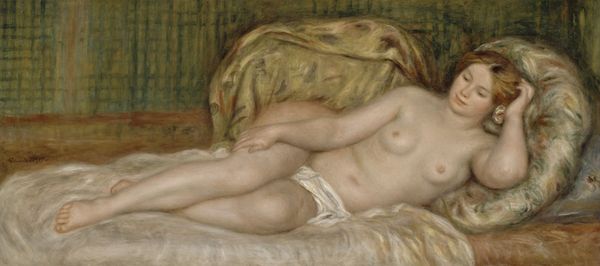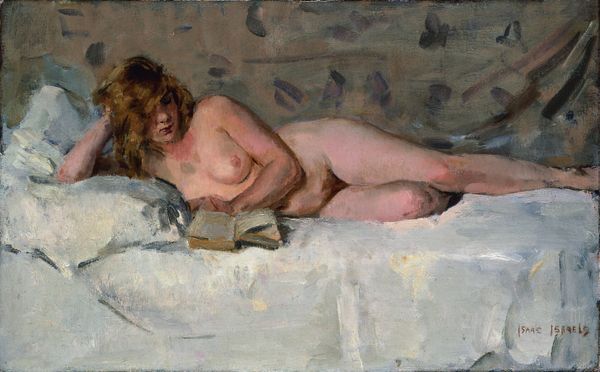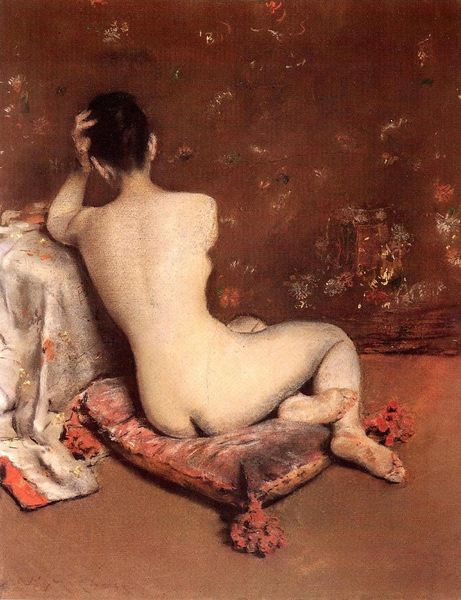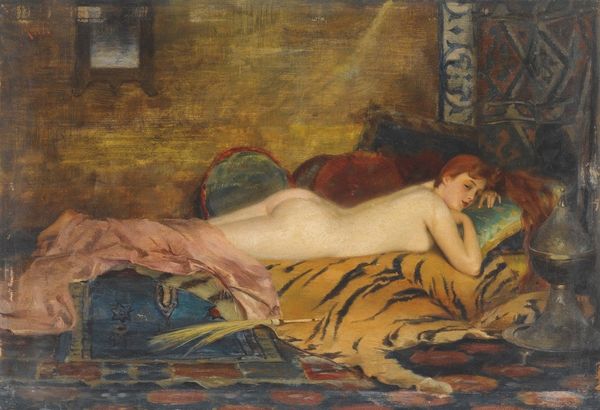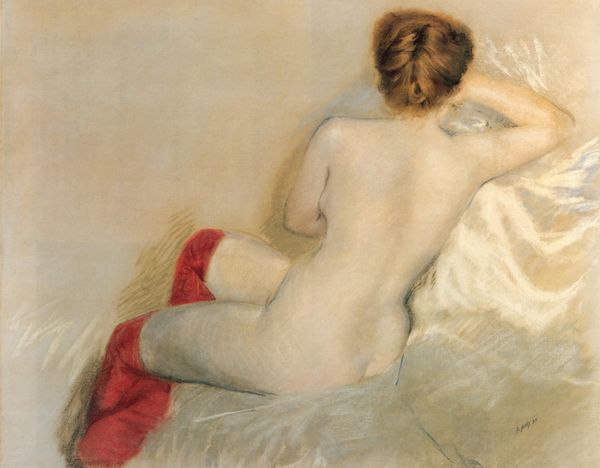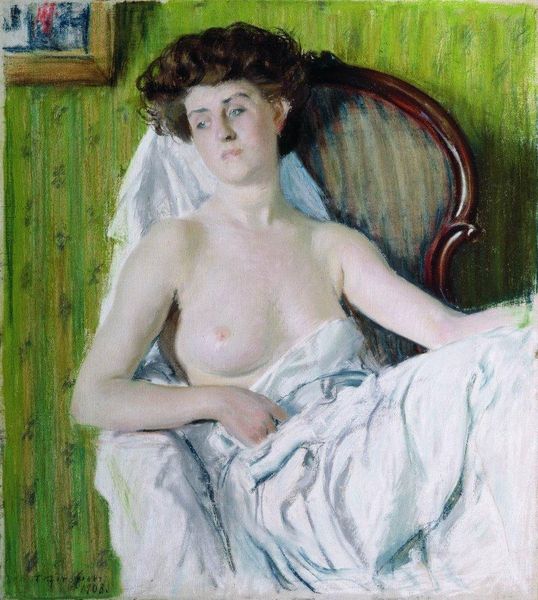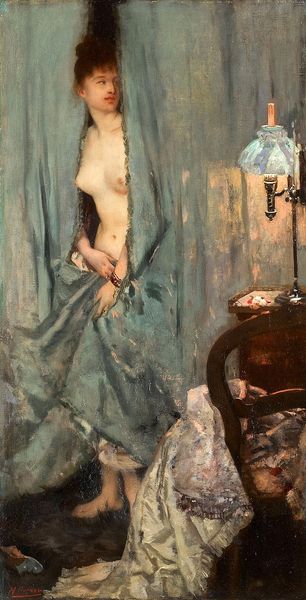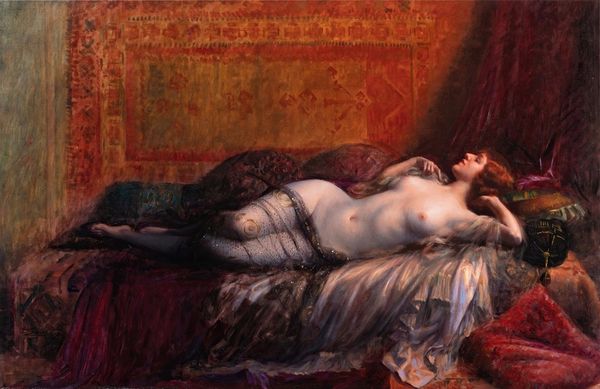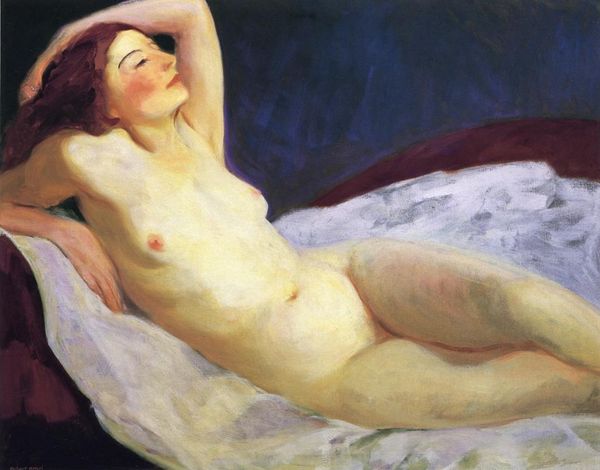
Copyright: Public domain
Editor: Here we have Giovanni Boldini's "Morning Letter," created in 1884 with oil paint. It feels quite intimate, almost voyeuristic, as if we're intruding on a private moment. How would you interpret the setting and subject matter in light of the period's social values? Curator: It’s tempting to see this through the lens of late 19th-century Italian society, where representations of women in domestic spaces were carefully coded. Consider the performative aspect. Is she truly unguarded, or is she aware, and perhaps even complicit, in being observed? The "morning letter" becomes a prop, an element in staging this private tableau for a public, implicitly male, gaze. Editor: That’s fascinating. So, is Boldini challenging or reinforcing these social norms? Curator: That's the core question, isn't it? He’s playing with these norms. Is Boldini offering social critique, unveiling the construction of female intimacy, or is he simply exploiting its appeal for a commercial art market that thrived on such imagery? Editor: The more you explain, the more I see it can be both. It's complicated and a little subversive. Thanks for sharing that. Curator: My pleasure! Considering art's historical role provides much insight. Now, I can see it in your face - it made you think more critically too, isn't it?
Comments
No comments
Be the first to comment and join the conversation on the ultimate creative platform.
